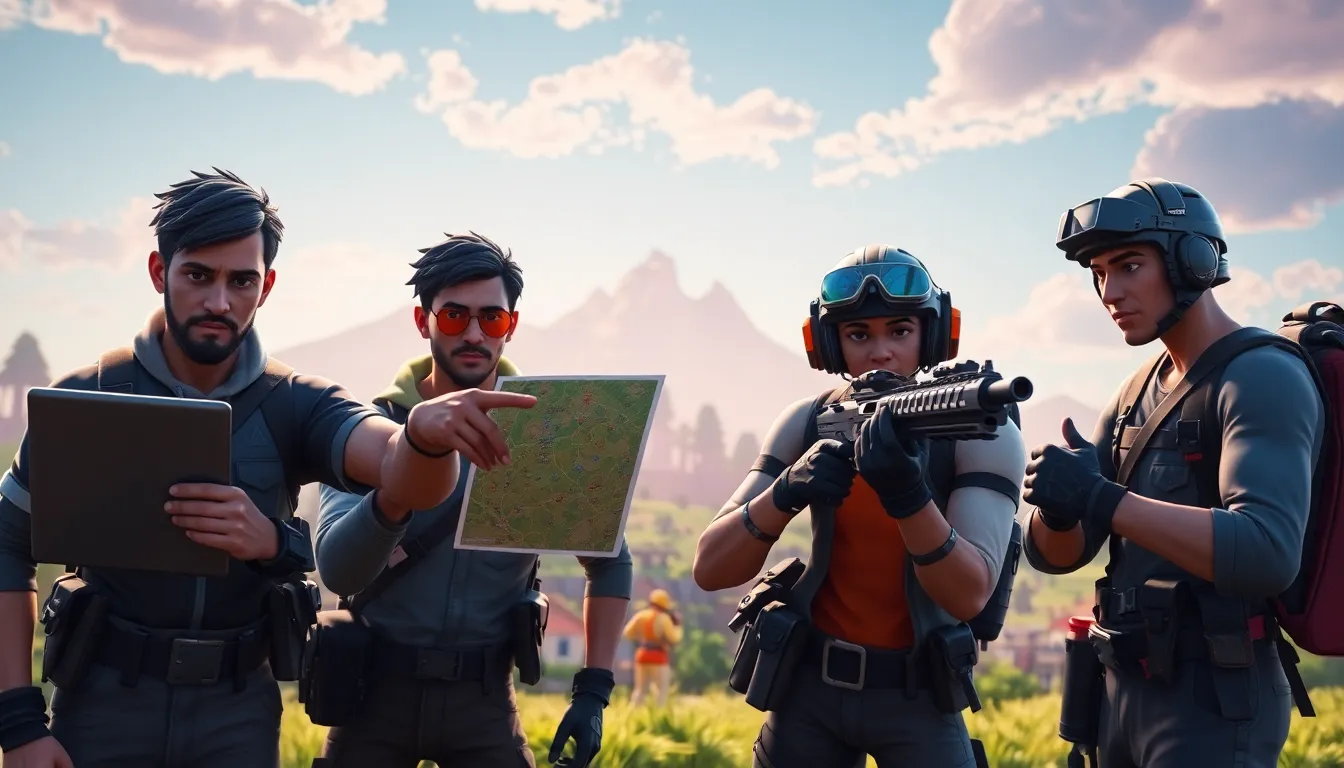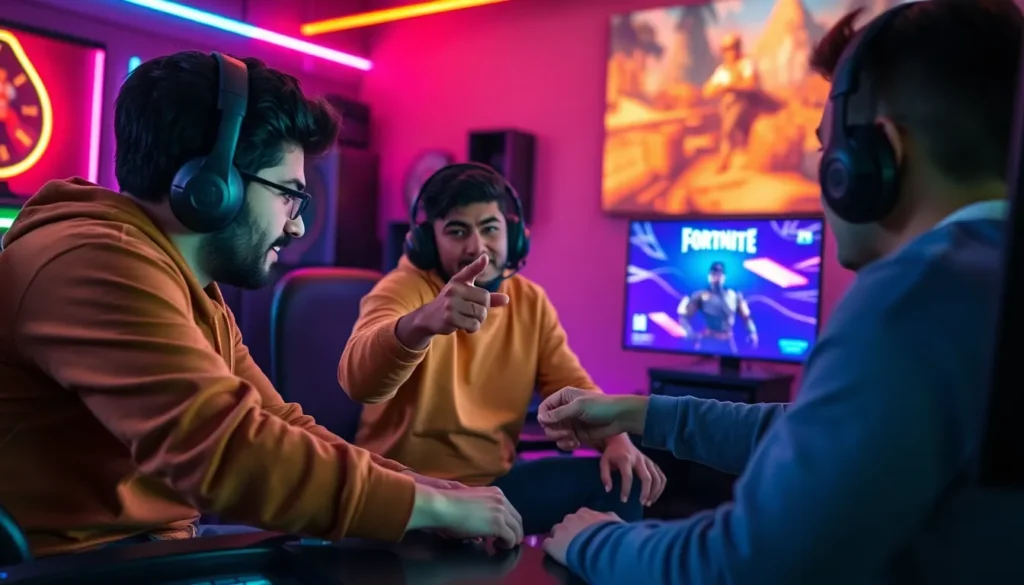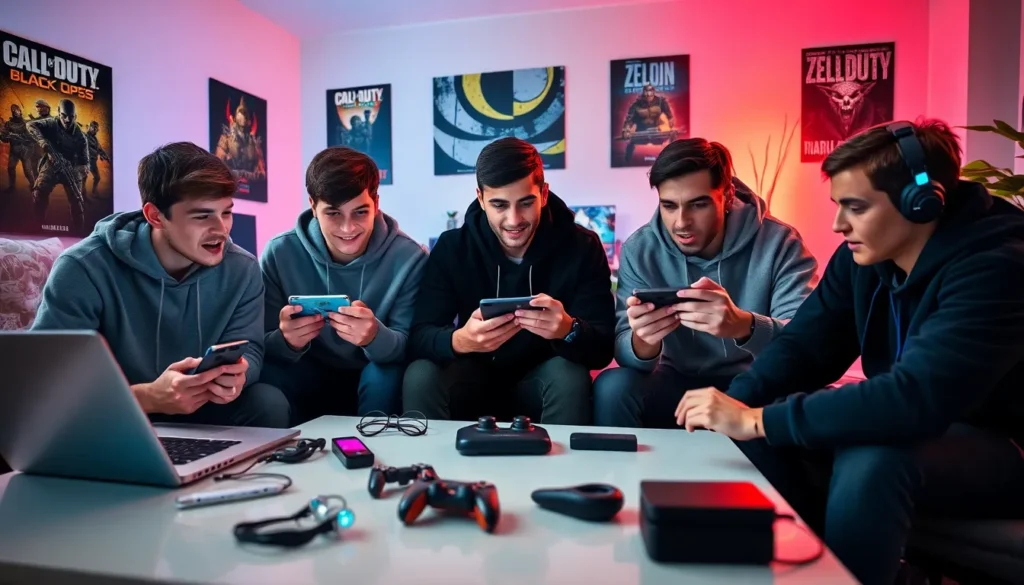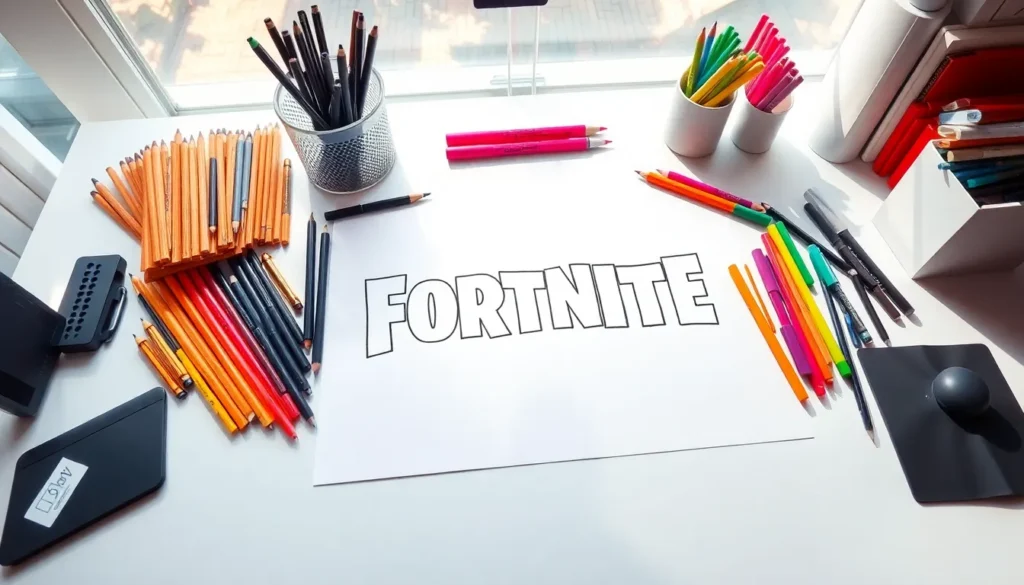Table of Contents
ToggleIn the vibrant world of Fortnite, squads bring a unique thrill that enhances the gaming experience. Players team up, combining their skills and strategies to outlast opponents and secure victory. Whether it’s building elaborate structures or executing tactical maneuvers, the dynamics of squad play create an exhilarating atmosphere that keeps gamers coming back for more.
Forming a squad isn’t just about numbers; it’s about synergy and teamwork. Each player brings their strengths to the table, making collaboration essential for success. As they navigate the ever-changing landscape of Fortnite, squads must adapt to challenges and leverage their collective abilities to dominate the battlefield. This article explores the ins and outs of Fortnite squads, offering insights into strategies, roles, and tips for maximizing teamwork in this fast-paced game.
Overview of Fortnite Squads
Fortnite Squads consists of teams made up of four players, fostering an environment for strategic collaboration and enhanced gameplay. Each player can select their character and gear, allowing for unique playstyles and synergy within the team. Players work together to complete objectives, secure resources, and eliminate opponents, increasing their chances of a Victory Royale.
Effective communication forms the backbone of successful squads. Players can use voice chat or quick commands to coordinate movements and share information about enemy positions. Timely callouts enable teams to execute tactics efficiently, improving their overall performance in matches.
Understanding roles within a squad enhances gameplay effectiveness. Players often assume specific positions, such as:
- Lead: Takes charge of navigation and decision-making, ensuring the squad stays on track.
- Support: Provides backup and healing items, assisting teammates in combat situations.
- Assault: Focuses on engaging enemies directly, utilizing weapons to deal damage.
- Scout: Surveys the area, gathering intel on opponent movements and strategic locations.
Adaptability plays a crucial role in squad dynamics. Situational awareness allows players to adjust their strategies according to the match’s evolving circumstances. High-ground control and resource management are essential elements that squads need to master for sustained success in Fortnite’s dynamic maps.
Squad Composition

Squad composition in Fortnite plays a vital role in achieving victory. Each player’s selected role directly impacts the team’s performance, creating a balance of skills and strategies.
Roles Within a Squad
- Lead: The Lead player sets the pace and direction for the squad. They initiate strategies and make critical decisions during engagements.
- Support: The Support player focuses on healing and providing resources. They ensure teammates have the necessary supplies and cover during intense moments.
- Assault: The Assault player engages enemies directly. Their primary focus is eliminating opponents, creating pressure on enemy teams.
- Scout: The Scout player gathers intelligence and goes ahead to locate enemies. They inform the squad about enemies’ positions, allowing for strategic planning.
Balancing Skills and Strategies
- Diverse Skills: High-performing squads blend different skill sets. Players bring unique abilities, such as building, shooting, or strategic planning, optimizing team functions.
- Teamwork: Effective collaboration ensures the squad adapts to rapidly changing scenarios. Players coordinate their actions to maximize advantages in combat.
- Strategic Adaptability: Adjusting tactics based on enemy behavior and environmental factors proves essential. Squads excel when adapting strategies dynamically, enhancing survival odds.
- Resource Management: Players must efficiently gather resources while balancing team dynamics. Effective resource management allows sustained engagement throughout the match.
Strategies for Success
Successful squad play in Fortnite hinges on communication, teamwork, and strategic gear choices. Implementing effective strategies enhances gameplay, making victory more attainable.
Communication and Teamwork
Communication and teamwork serve as foundational pillars in Fortnite Squads. Players must use voice chat or quick commands to share enemy locations and coordinate actions effectively. Establishing a clear plan at the start of each match ensures that all squad members are aligned on objectives and strategies. Adjusting tactics in real-time according to the squad’s situation allows for dynamic decision-making. Emphasizing regular check-ins among teammates fosters trust and enhances collaboration, allowing teams to respond to threats more effectively. Active listening is equally important; recognizing teammates’ signals and needs enables better synergy during crucial engagements.
Effective Loadouts and Gear
Choosing effective loadouts and gear directly impacts a squad’s performance in Fortnite. Members should select weapons and items that complement their roles. For example, the Assault player might prioritize high-damage weapons, while Support players should equip healing items and shields. Loadout choices should reflect not only individual playstyles but also the squad’s overall strategic approach. Balancing ranged and close-combat weapons across team members enhances versatility. Players should also carry utility items such as grenades or traps to engage enemies effectively. Regularly reassessing gear based on the evolving game context, including circle locations and enemy strategies, maximizes chances of survival and success during encounters.
Popular Squad Tactics
Effective squad tactics in Fortnite significantly enhance a team’s ability to succeed in matches. Players utilize various strategies, including flanking, ambushing, and advanced building techniques, to outsmart opponents and secure victory.
Flanking and Ambushing
Flanking involves positioning squad members around enemies to attack from multiple angles. This tactic disrupts enemy coordination and creates confusion. Squad members should communicate movements, ensuring one player distracts the enemy while others close in from the sides or behind. Ambushing complements flanking by setting traps in strategic locations. Players can use terrain features for cover, enabling surprise attacks. Quick decisions and synchronized actions lead to successful flanking and ambushing maneuvers that can eliminate foes swiftly.
Building Techniques
Building techniques play a crucial role in squad tactics, providing defensive and offensive advantages. Effective structures allow players to gain high ground, making it easier to spot enemies and decrease their shots’ accuracy. Squads should practice building efficiently under pressure, enabling rapid responses during engagements. Techniques such as ramp rushes, box fighting, and editing plays become essential. Utilizing materials wisely ensures durability during firefights while allowing quick escapes or repositioning. Balanced use of building can turn the tide of battle, giving squads the upper hand in critical moments.
Challenges Faced in Squads
Squad play in Fortnite presents unique challenges that can impact overall performance. Identifying and addressing these issues fosters teamwork and enhances gameplay.
Common Mistakes
- Poor Communication. Squads suffer when players fail to share vital information about enemy positions or strategies. Lack of constant updates prevents effective coordination.
- Neglecting Roles. When players ignore their designated roles, such as the Lead not directing or the Support not healing, the squad’s effectiveness diminishes significantly.
- Overextending. Players often engage in fights without adequate support, leading to isolation and easy elimination. Awareness of teammates’ locations is essential.
- Ignoring Map Awareness. Squads that don’t strategize around the map risk being caught off-guard. Players should always monitor the safe zone and potential enemy hotspots.
- Inconsistent Loadouts. Players choosing weapons that don’t complement their roles or the squad’s strategy can weaken overall performance. Selecting compatible gear is crucial.
Adapting to Different Playstyles
- Recognizing Strengths. Players should assess each member’s strengths and adjust strategies accordingly. Understanding individual playstyles enables more effective team dynamics.
- Flexible Tactics. Surprising opponents with varied approaches can catch them off-guard. Adapting tactics based on enemy behavior creates opportunities for advantage.
- Offering Support. Encouraging players to provide assistance based on situational needs allows for better synergy. A Support player may need to prioritize healing when an Assault player engages enemies.
- Encouraging Adaptability. Players should be willing to change roles or tactics mid-game if circumstances require it. Flexibility enhances teamwork and adaptability in dynamic situations.
- Building Team Synergy. Fostering coordination around different playstyles strengthens overall gameplay, ensuring that everyone contributes effectively to squad success.
Fortnite squads offer a thrilling way to experience the game through collaboration and strategy. By understanding each player’s role and leveraging their unique strengths, teams can navigate the fast-paced environment more effectively.
Communication remains the backbone of successful squad play. Players who adapt their tactics and maintain awareness of their surroundings can turn challenges into opportunities.
Mastering popular tactics like flanking and ambushing, along with effective loadout choices, can significantly boost a squad’s performance. With the right approach and teamwork, any squad can enhance their gameplay and increase their chances of victory in Fortnite.




